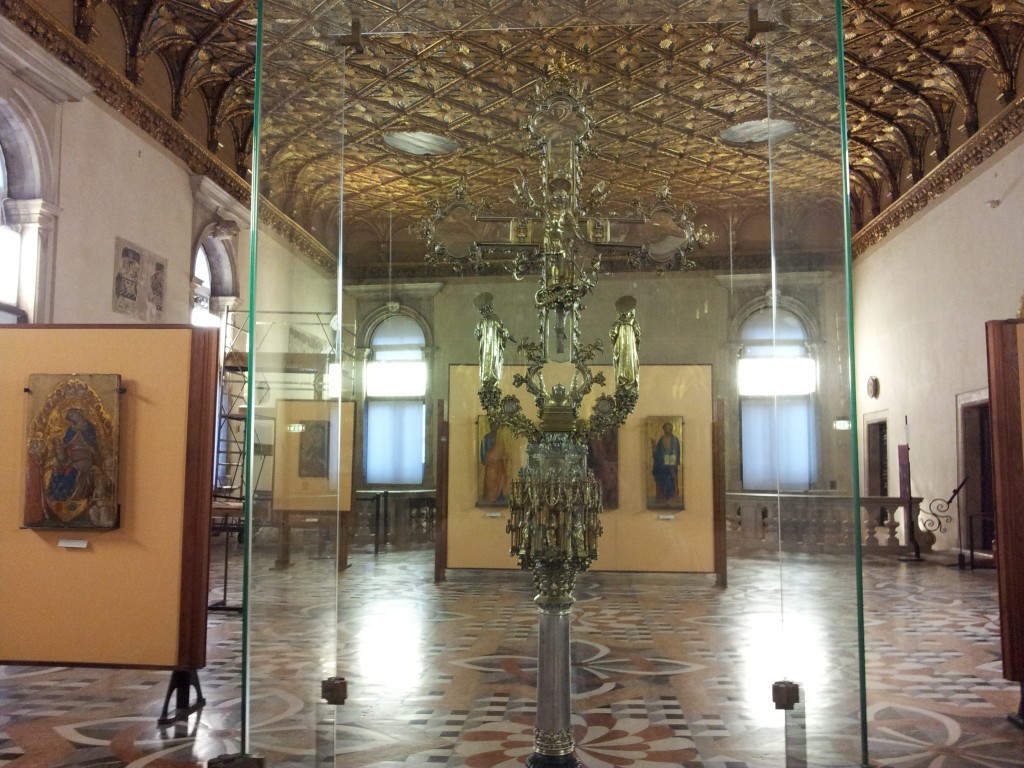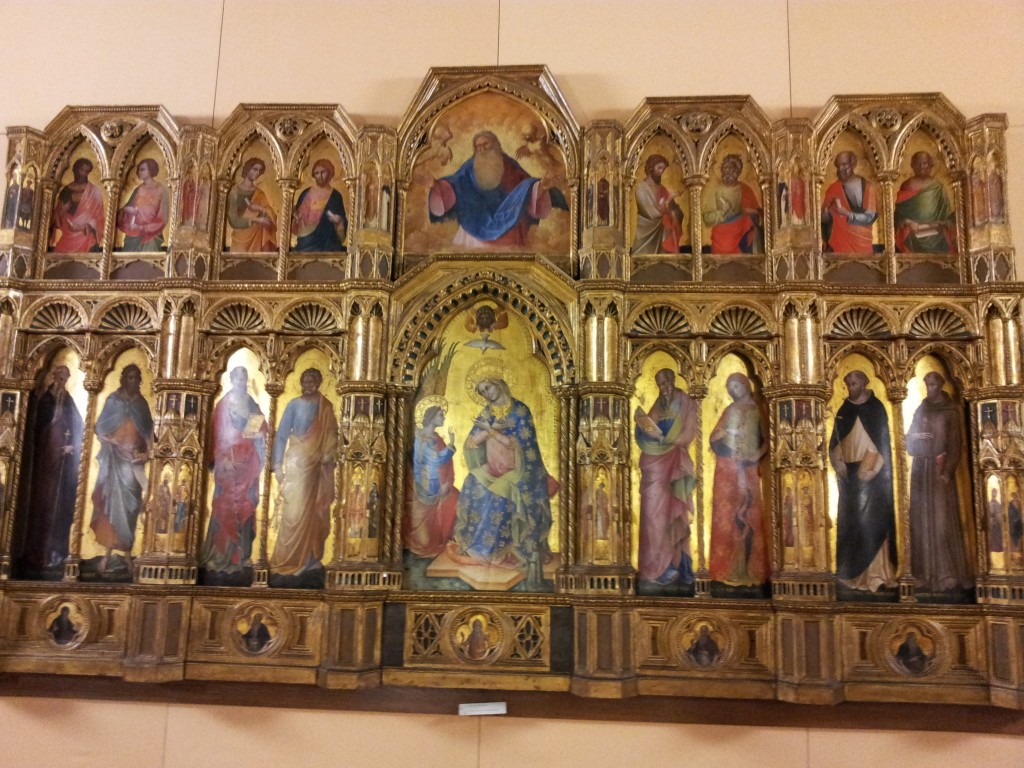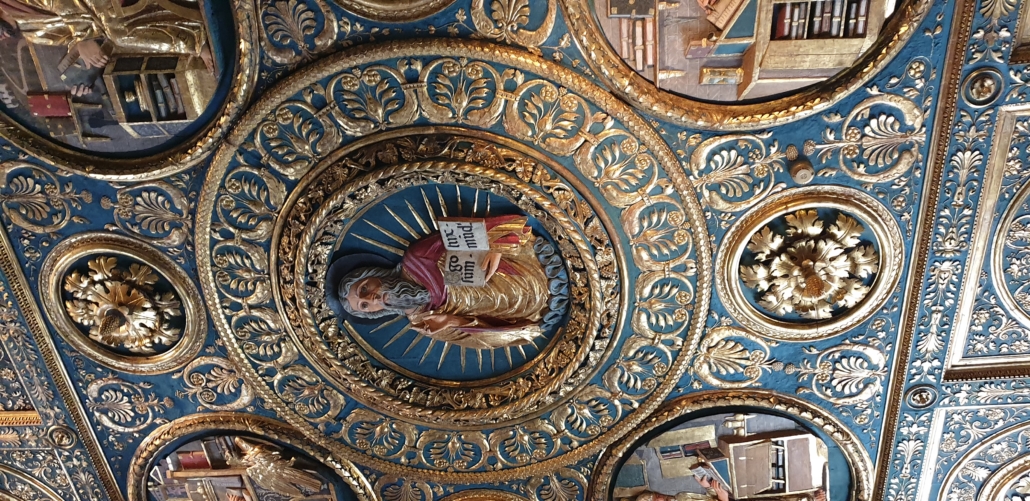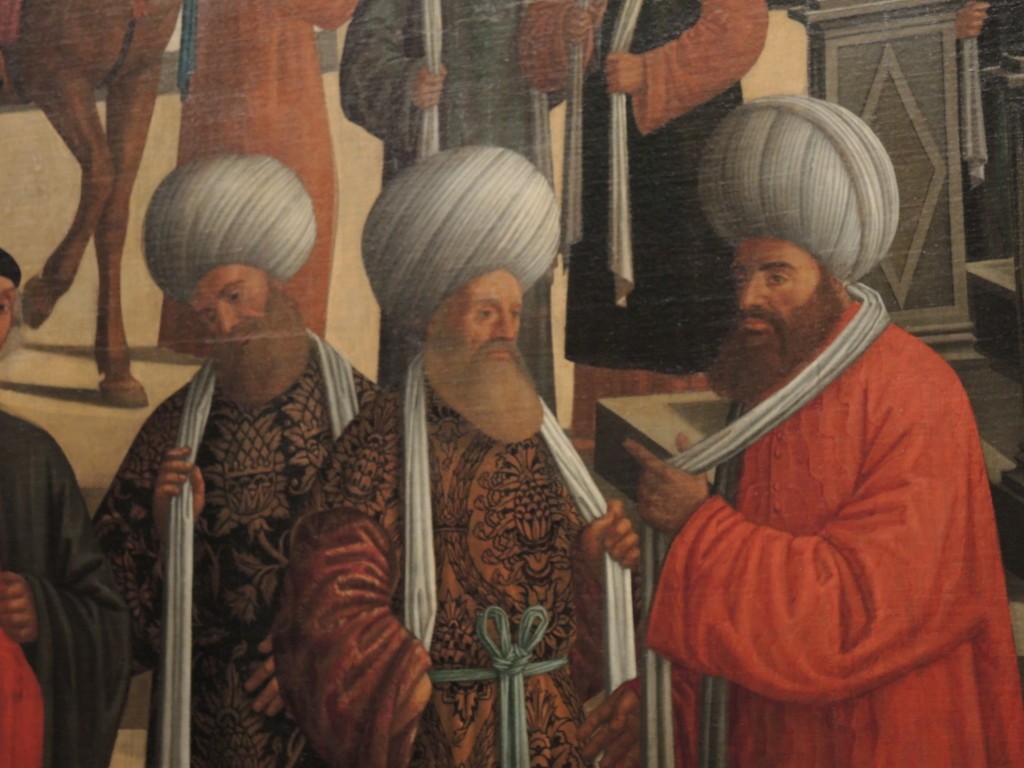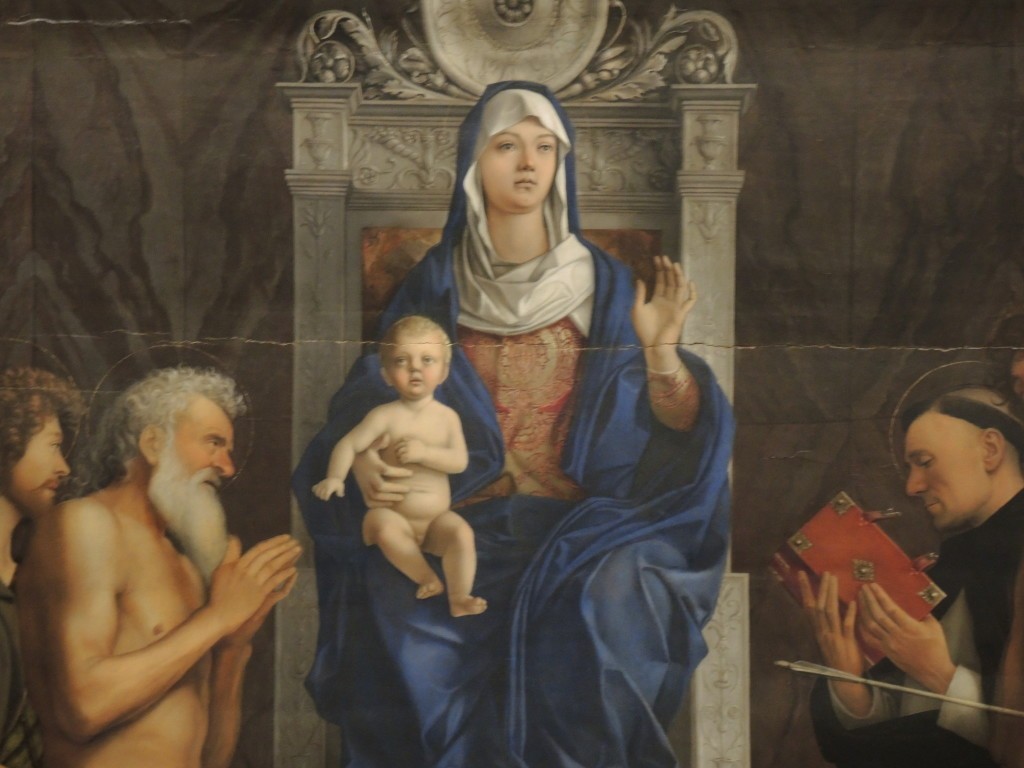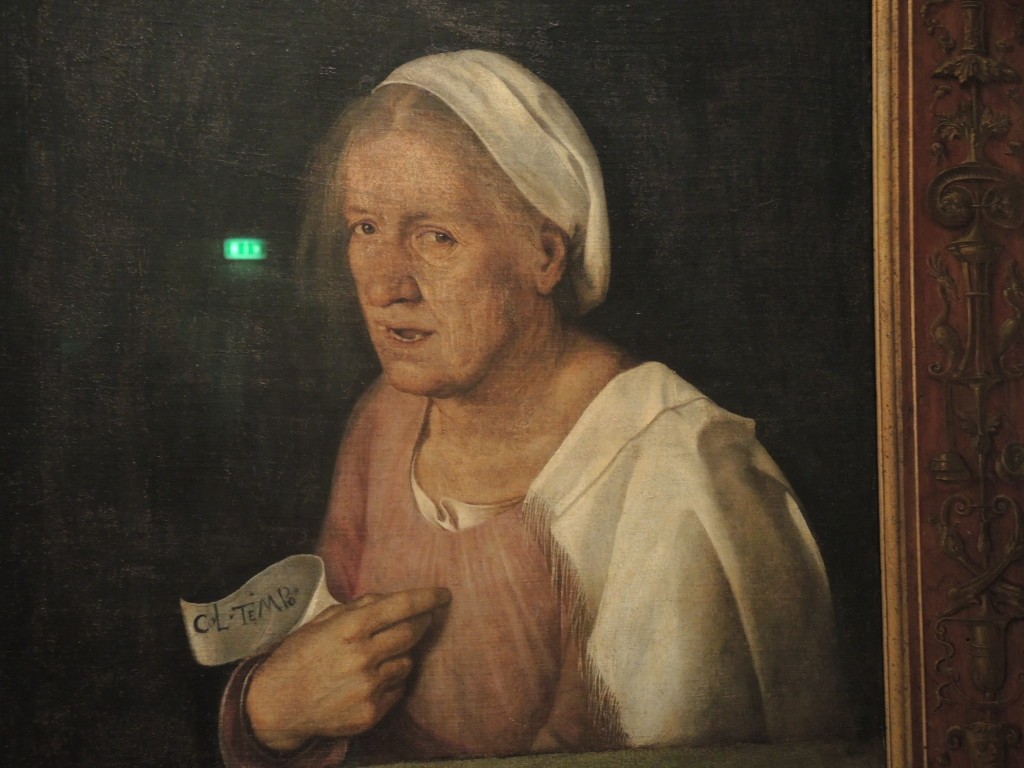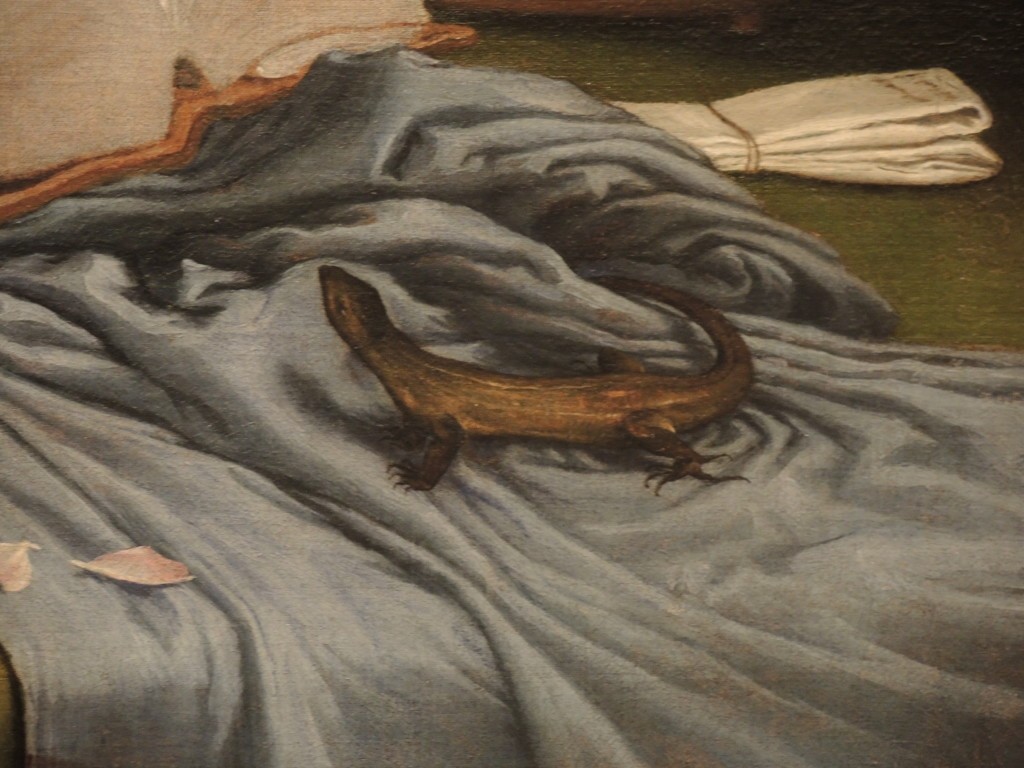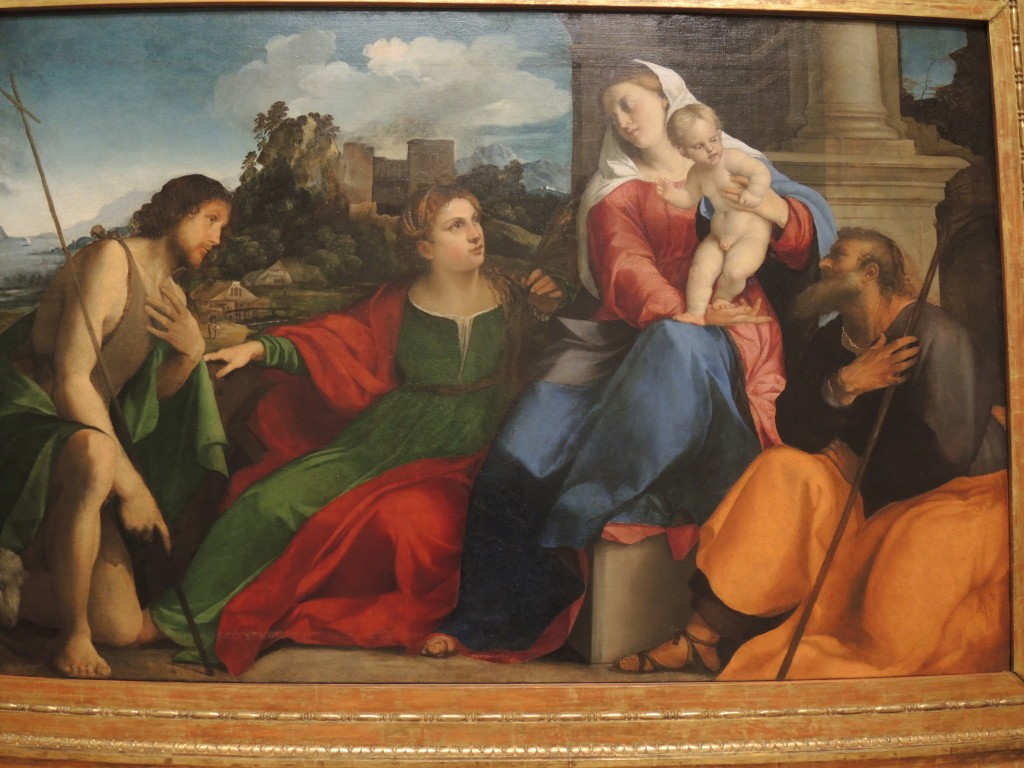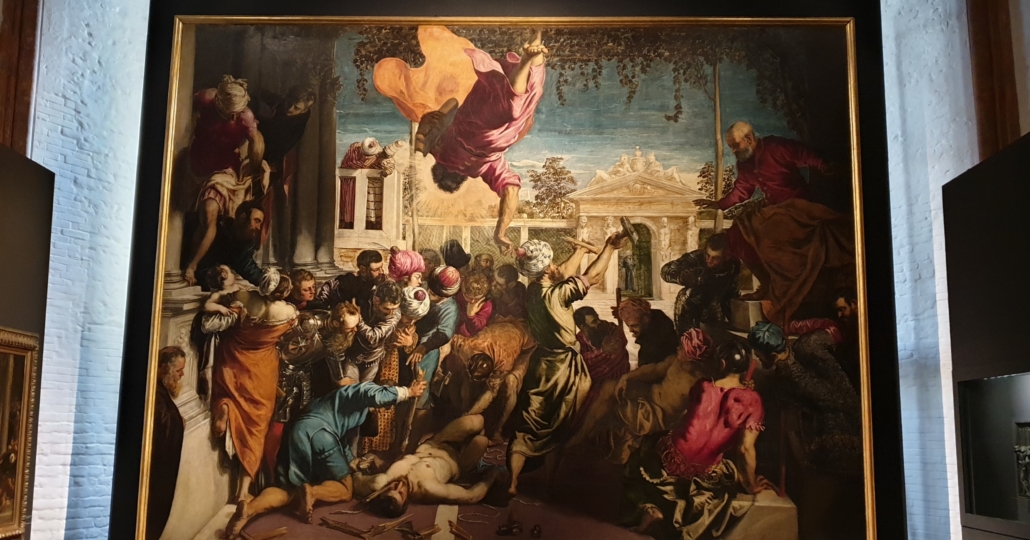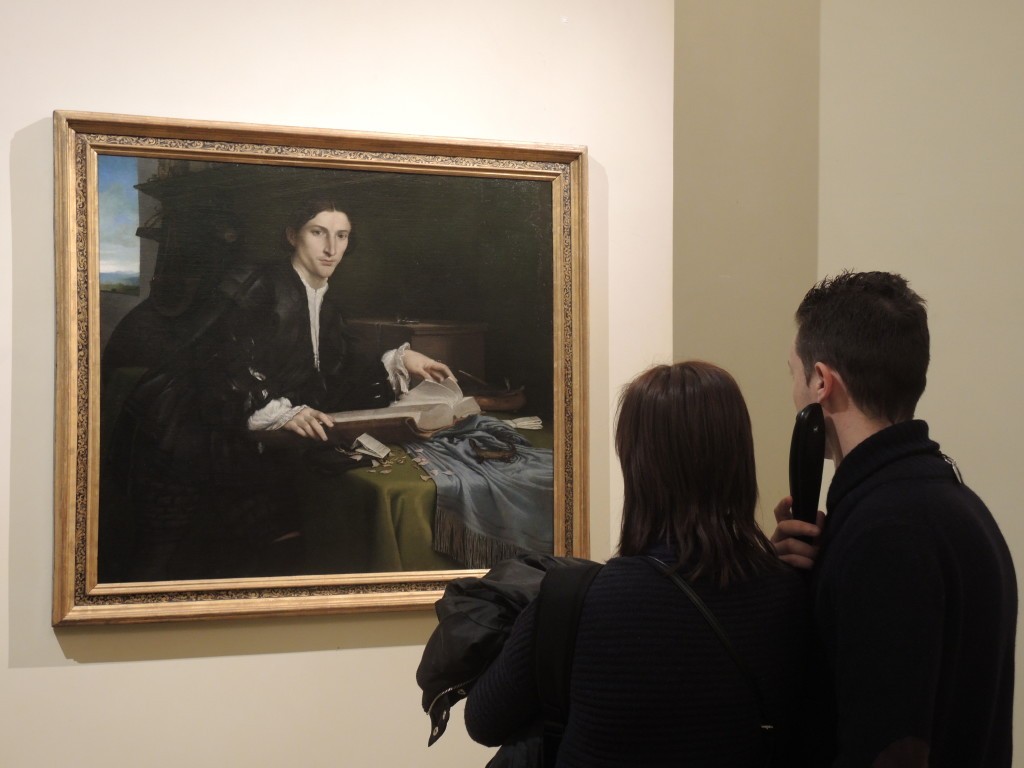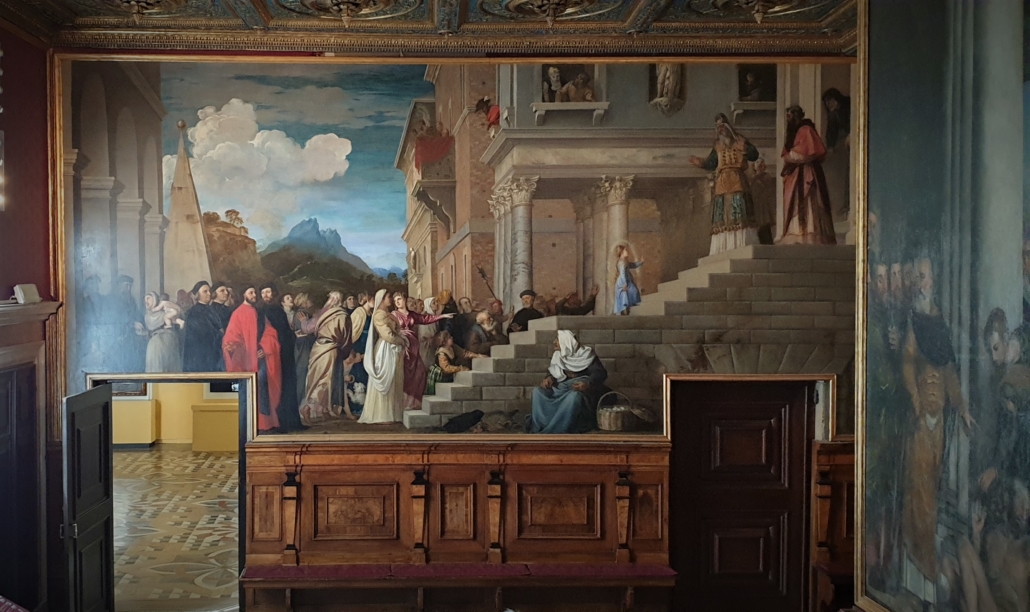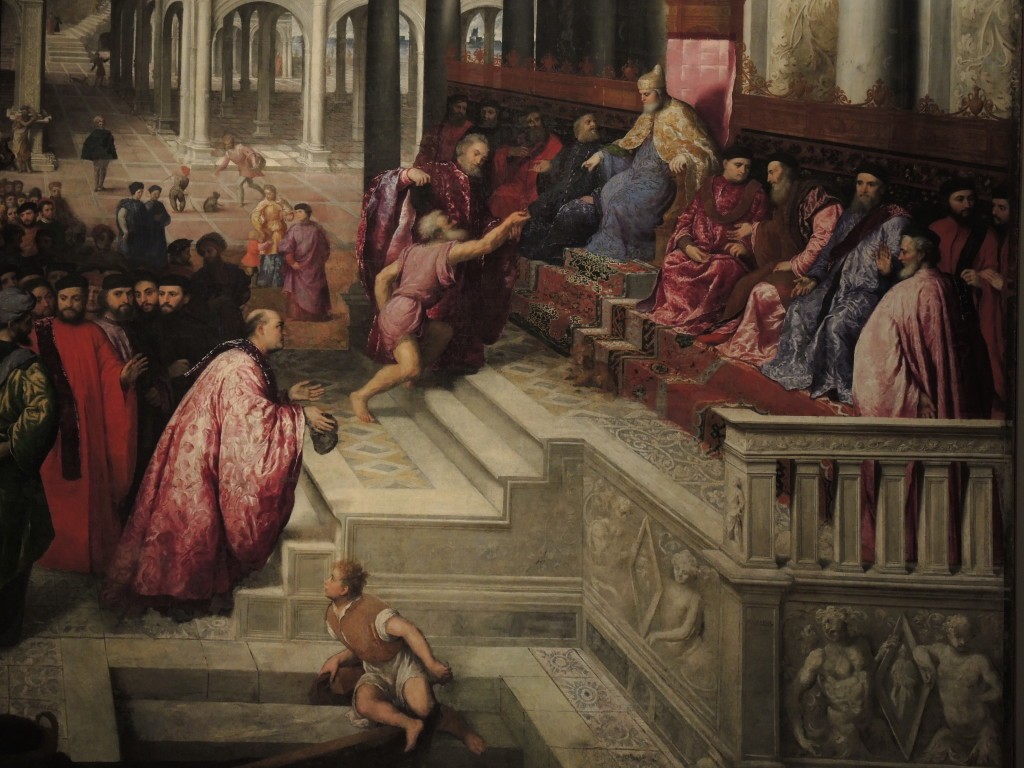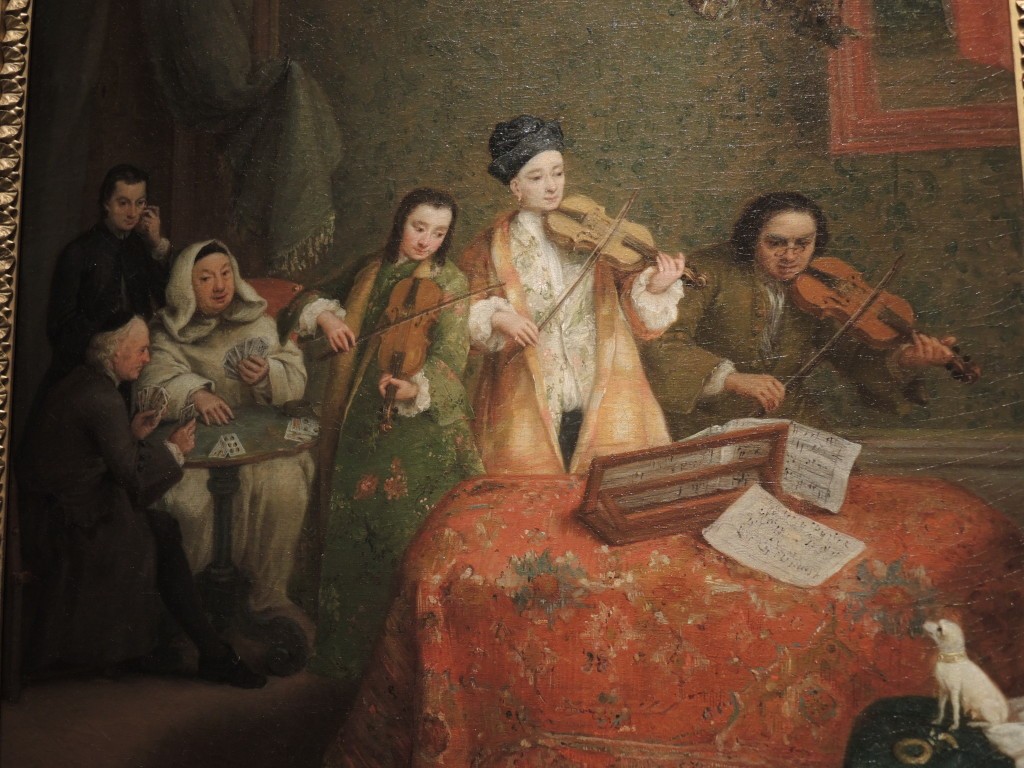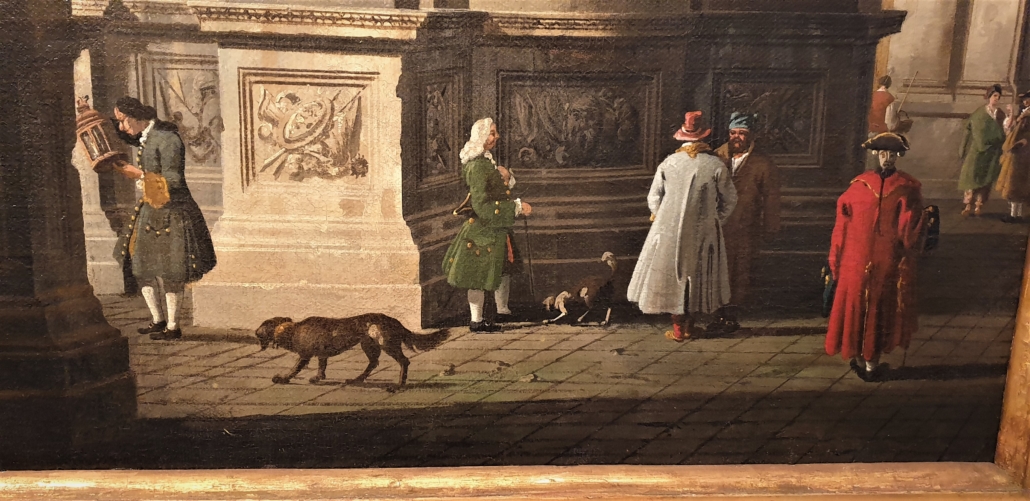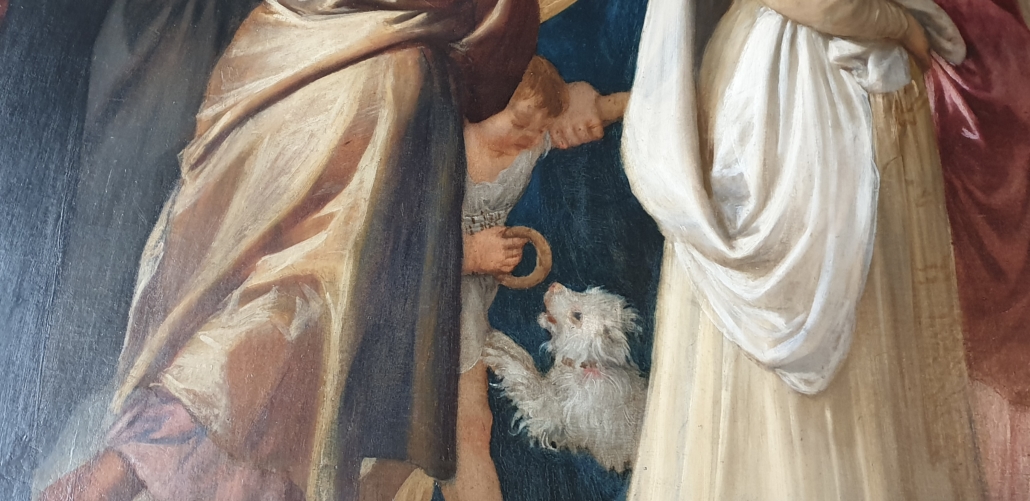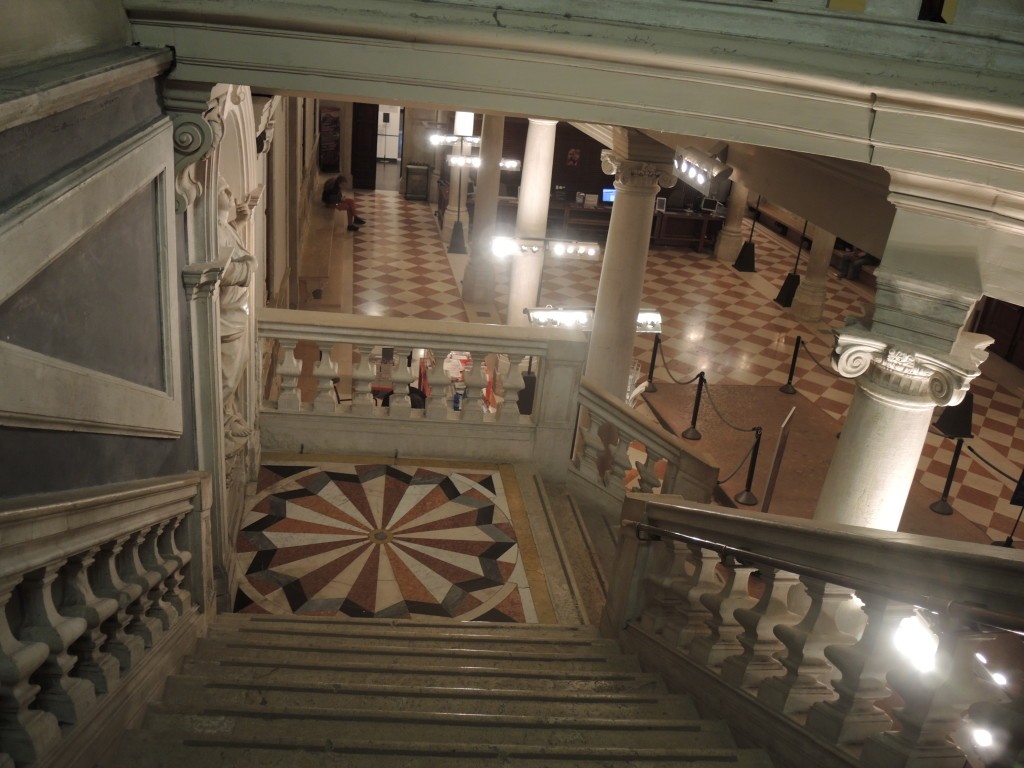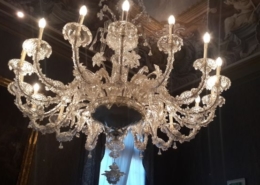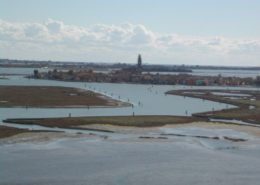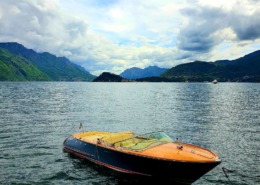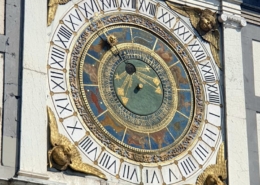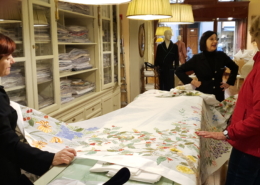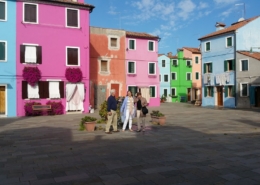Highlights of this tour
- Cycle of Saint Ursula by Vettore Carpaccio
- Cycle of San Giovanni Evangelista by G. Bellini, Carpaccio, and others
- Giovanni Bellini Sacra Conversazione from San Giobbe
- The Tempest by Giorgione
- Portrait of a Young Man by Lorenzo Lotto
- The Miracle of the Slave by Tintoretto
- The Banquet in the House of Levi by Paolo Veronese
- Titian’s Pieta’
THE ACCADEMIA GALLERIES
The Accademia Galleries – a guided visit to the most important collection of Venetian painting in the world.
The museum, located at the foot of the Accademia Bridge, in the district of Dorsoduro, displays a complete overview on Venetian painting, also hosts an important group of drawings (including Leonardo’s ‘Vitruvian Man’) and sculptures (by Antonio Canova in particular).
We start in the first room with Paolo Veneziano’s altar-pieces, precious as jewels, still strongly in debt with the Byzantine tradition. It will be interesting to compare them with the works by Lorenzo Veneziano, stressing the accent on how the political changes in the asset of the Venetian Republic also caused a renovation in the artistic language.
The transition from typically Byzantine to International Gothic style went on between the 14th and the 15th centuries.
We’ll proceed through the Sala dell’Albergo, that boasts The Presentation of Mary in the Temple by Titian, where we’ll admire the fantastic 15th century carved wooden ceiling as well. Save Venice organization has carried on a thorough restoration completed in 2012.
Next room will bring us back to the Venice of the late 15th century: the enchanting tales of Gentile Bellini and Carpaccio, proceeding from the suppressed Scuola Grande of San Giovanni Evangelista, are an extraordinary document on the aspect of architectures, boats, people, objects, textiles, described with almost photographic precision.
Few steps away is another gem of the collection, the Stories of St Ursula by Carpaccio, where the vicissitudes of St Ursula give the occasion to describe the Venetian world itself.
Your guide will narrate the adventurous history of the Saint and will point out some interesting details.
Cost of this tour
- This tour lasts three hours and costs 345 euros up to six people (not per person), only private parties.
- For larger parties send us an email!
- Admission fees per person: Gallerie dell’Accademia: 17 euros (full rate) – 3 euros (reduced rate)
Dress Code and advice
- No dress code. It is a good idea not to bring large handbags.
- As there are not many seats inside the Galleries, please wear comfortable shoes.
- The Accademia Galleries are closed on Monday afternoons.

